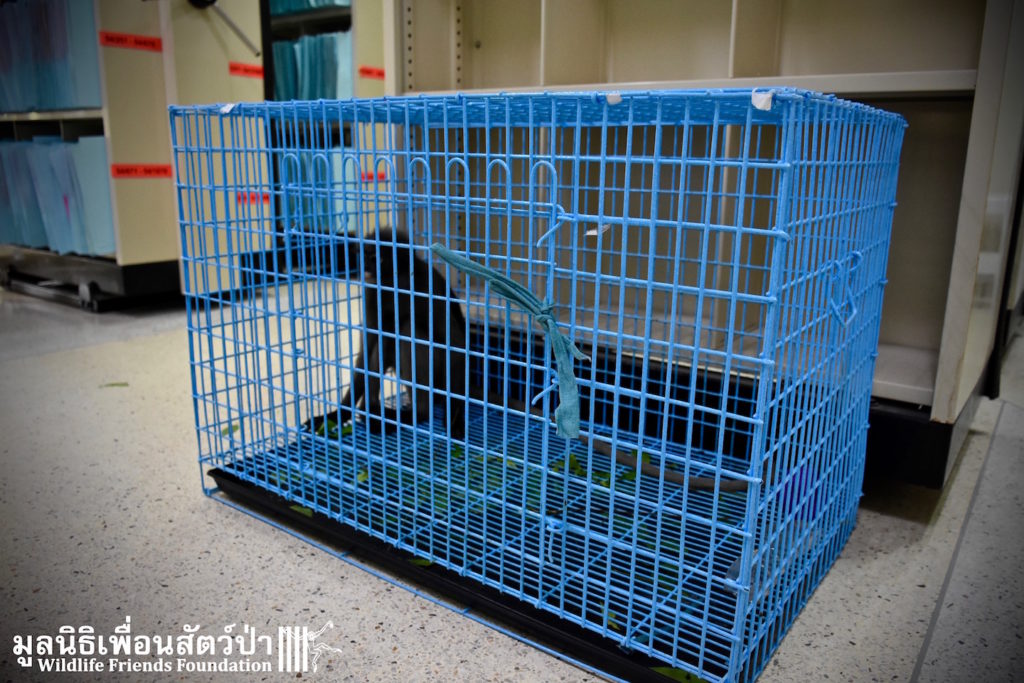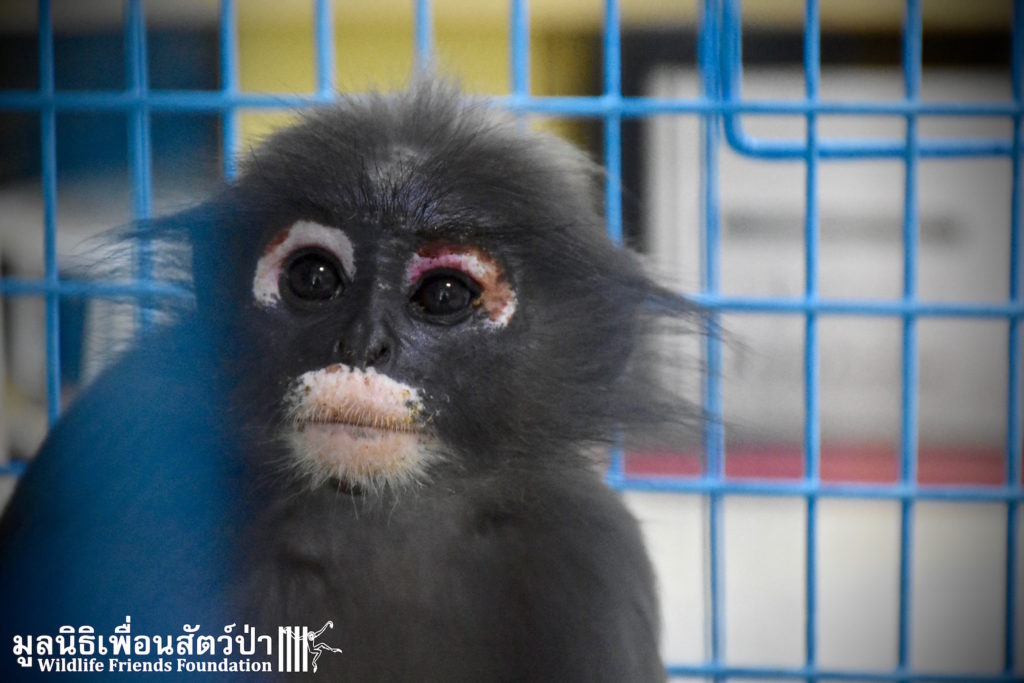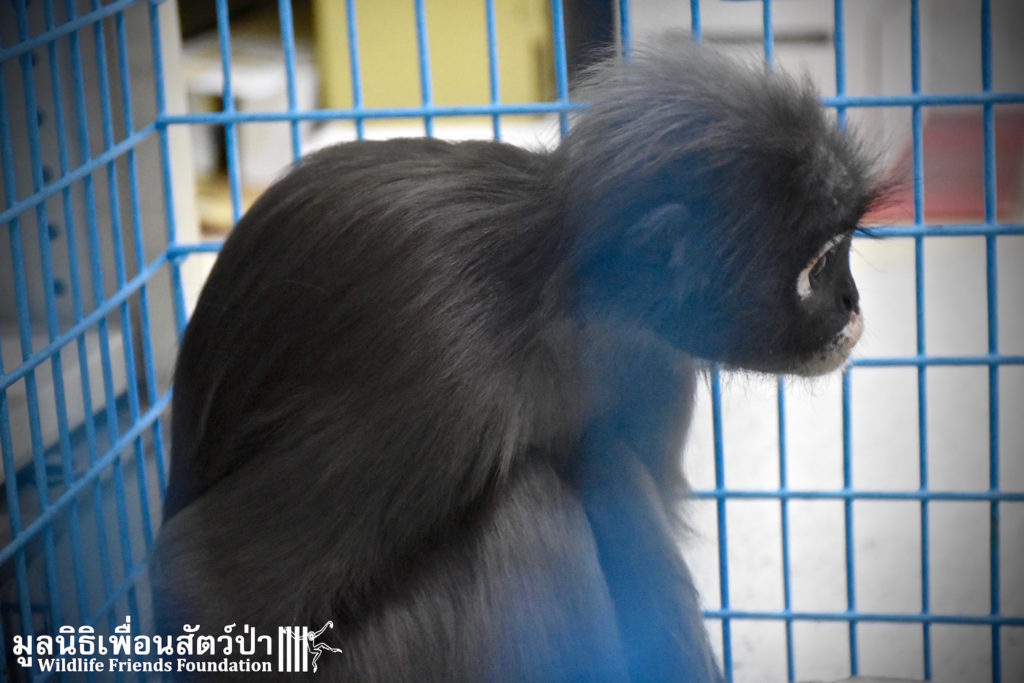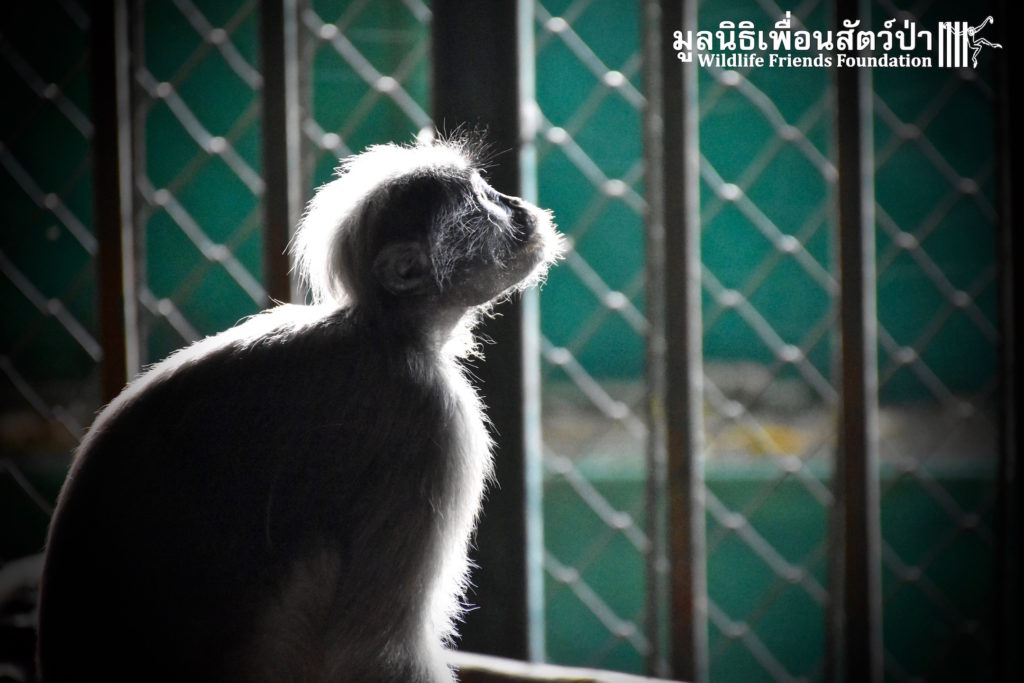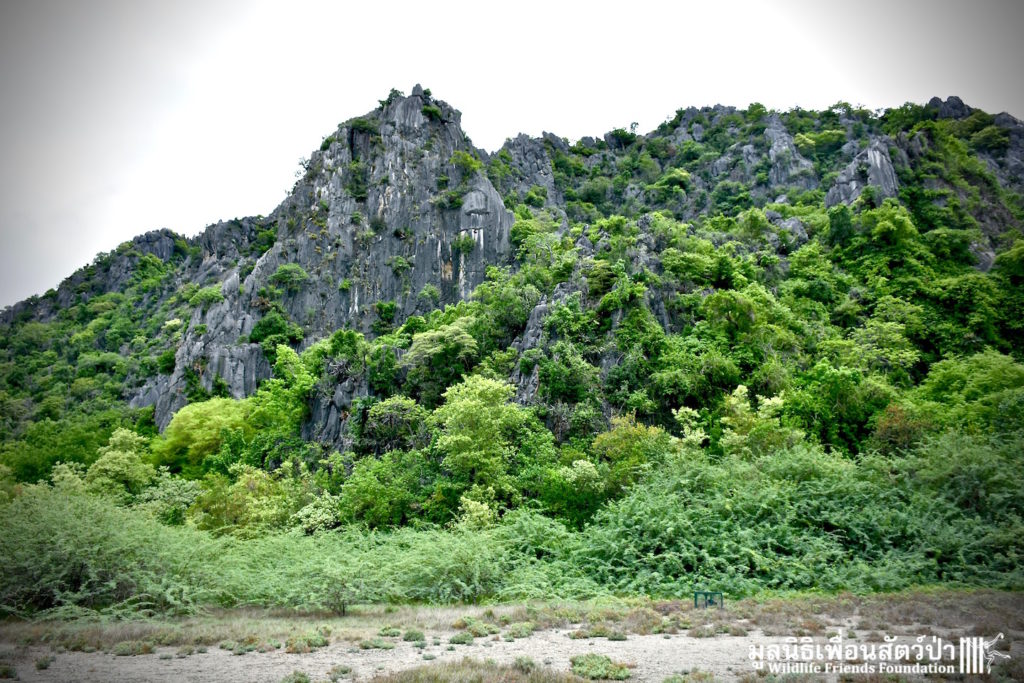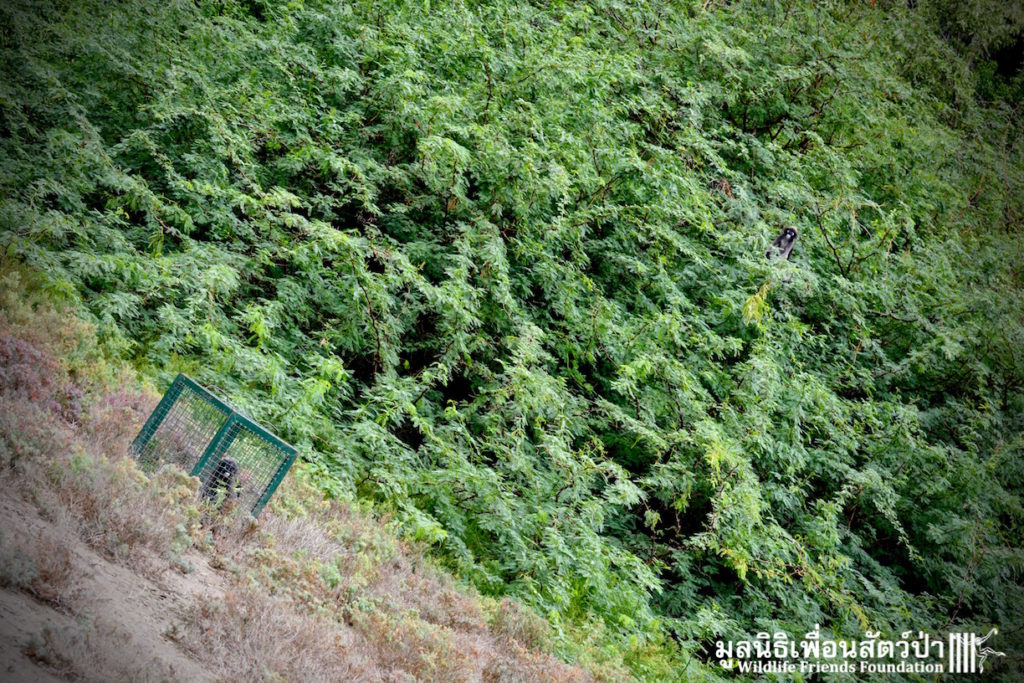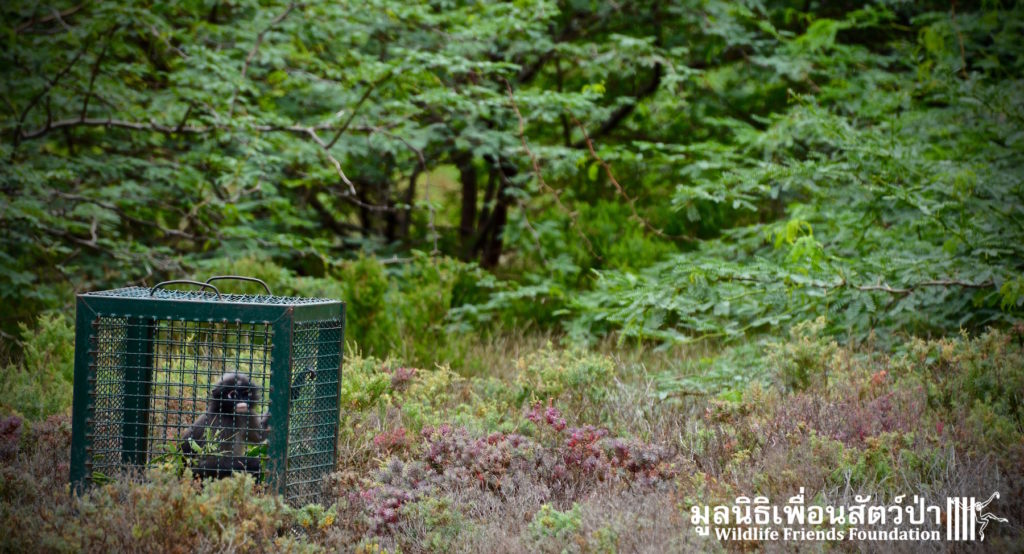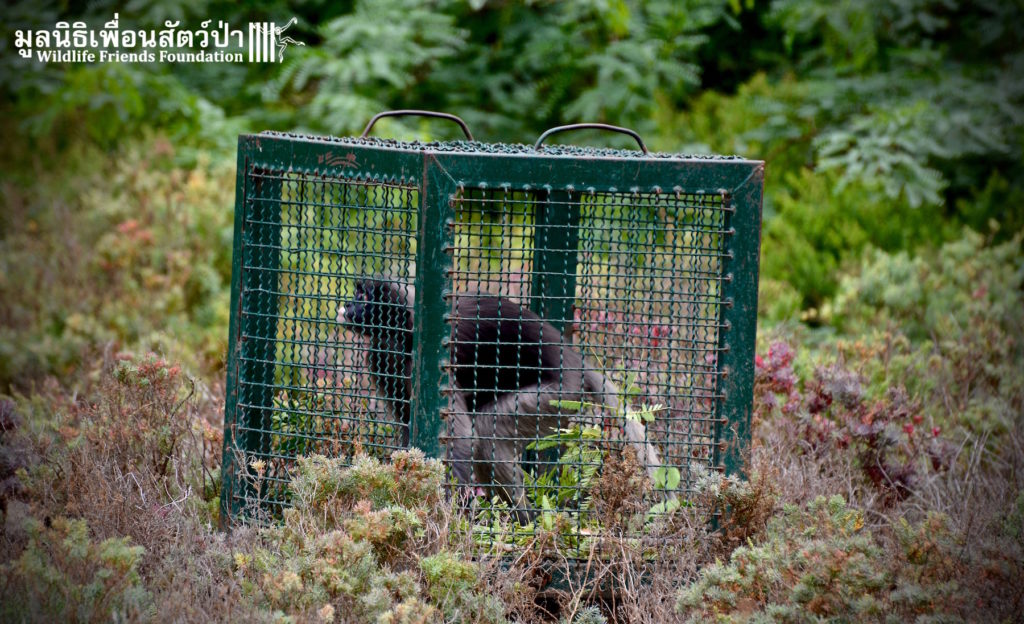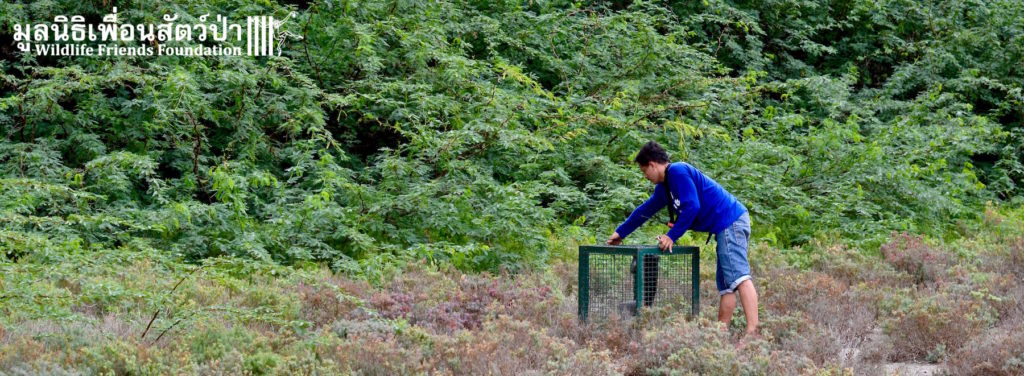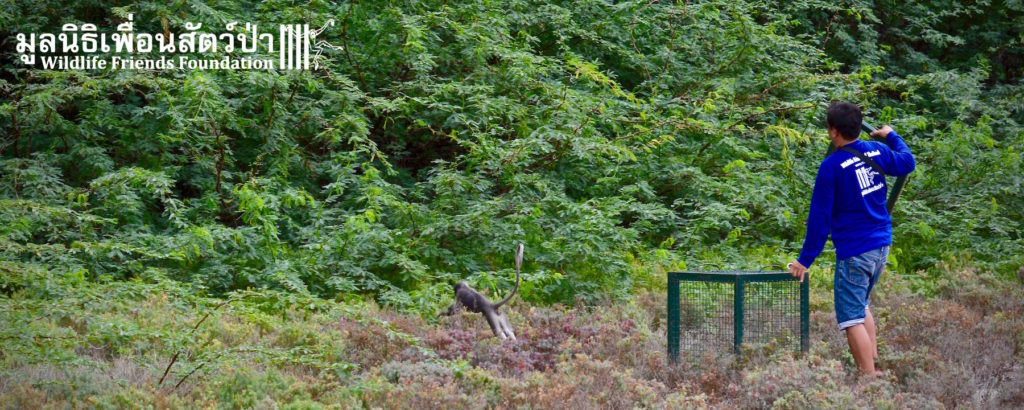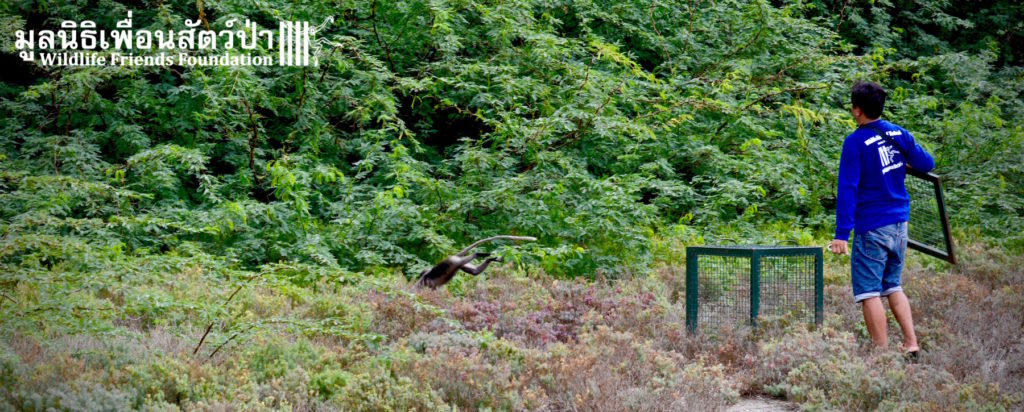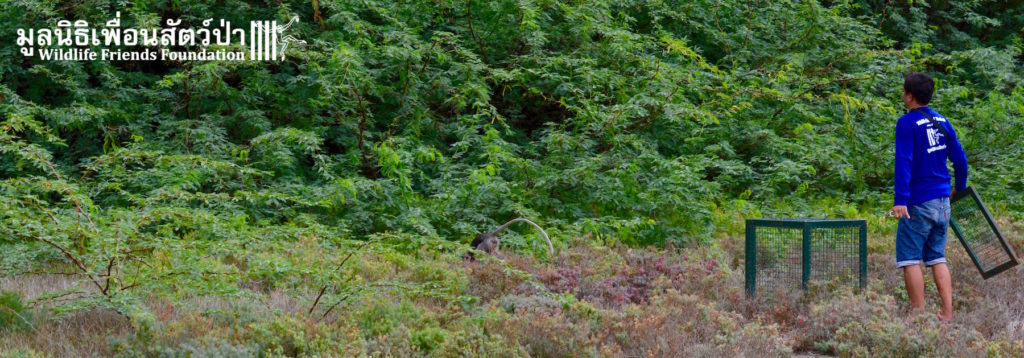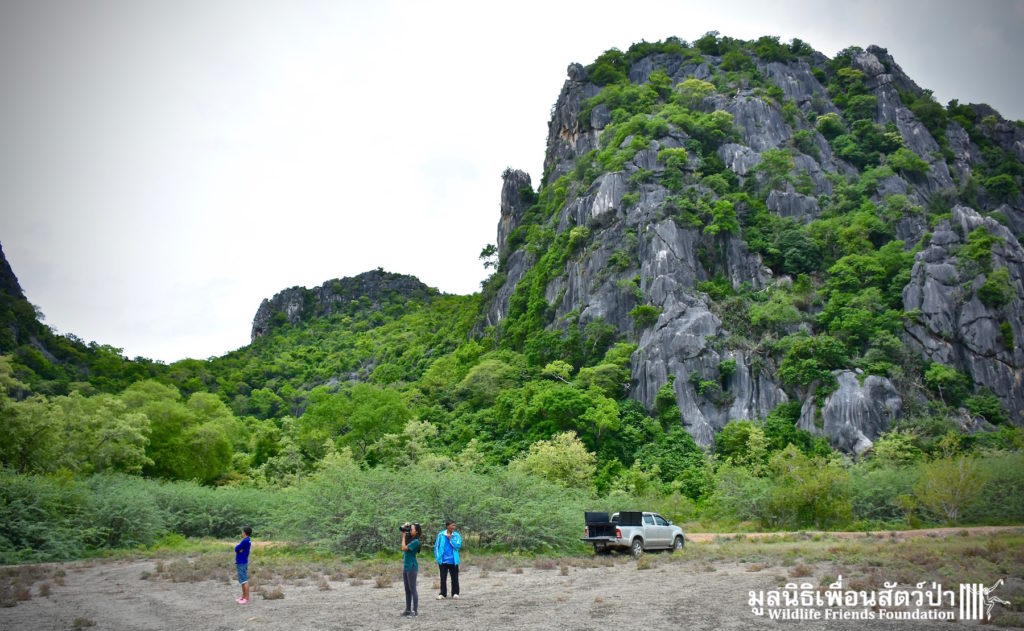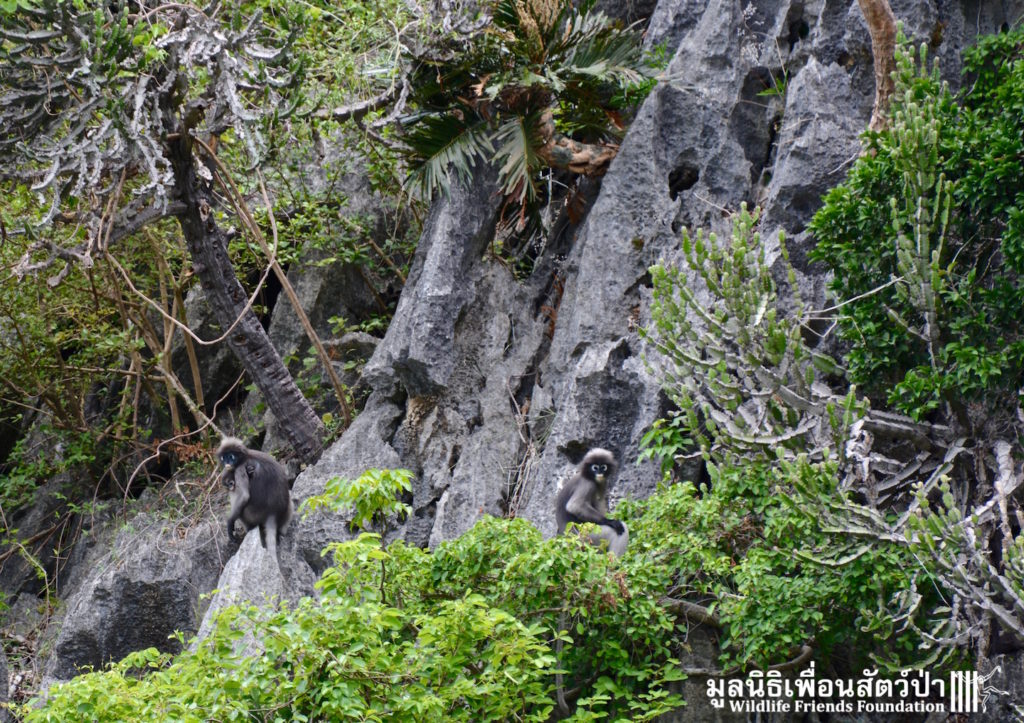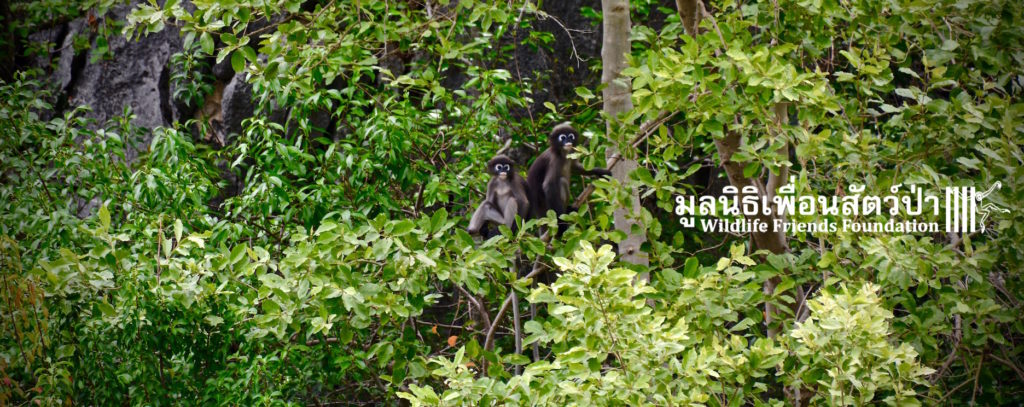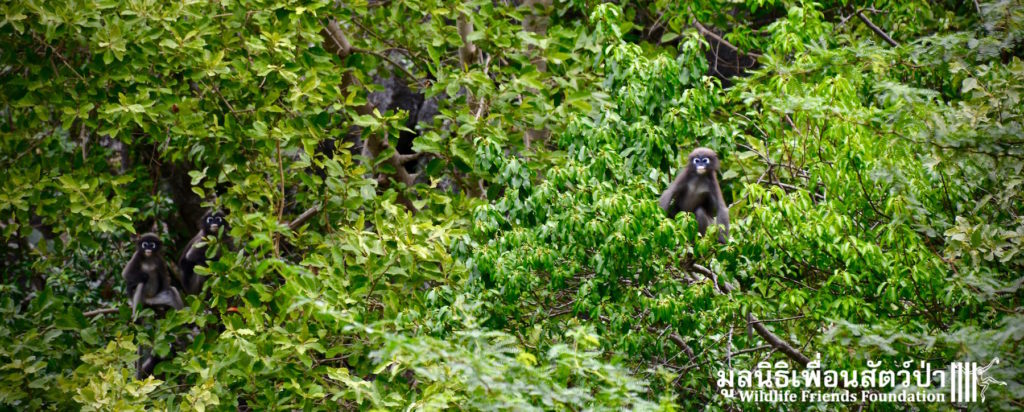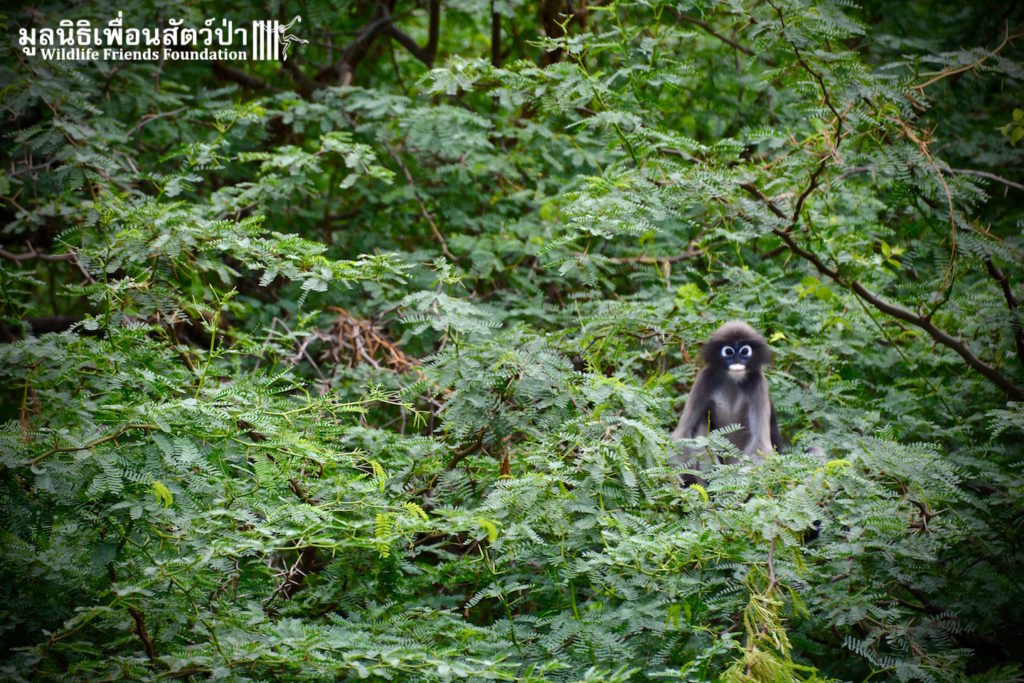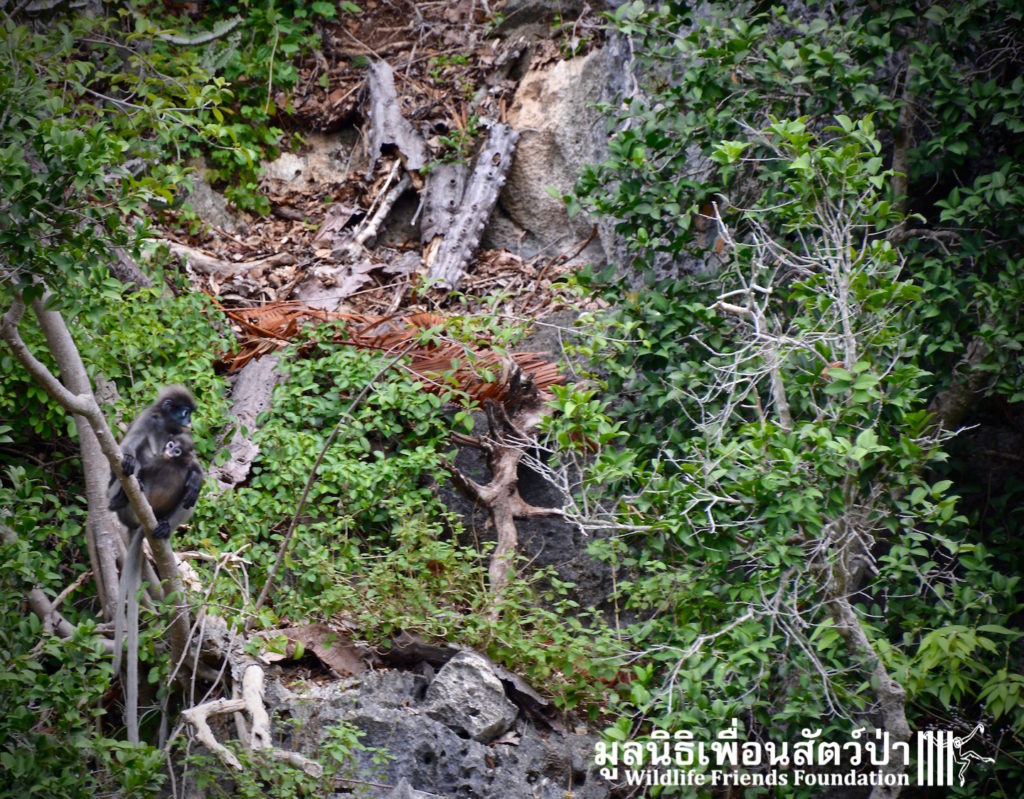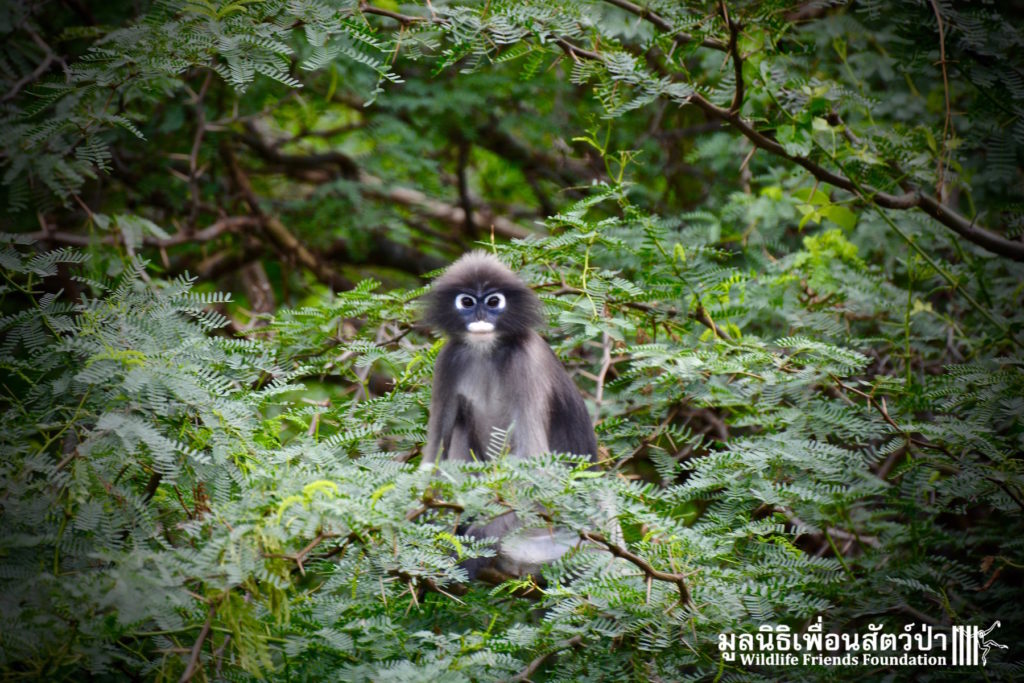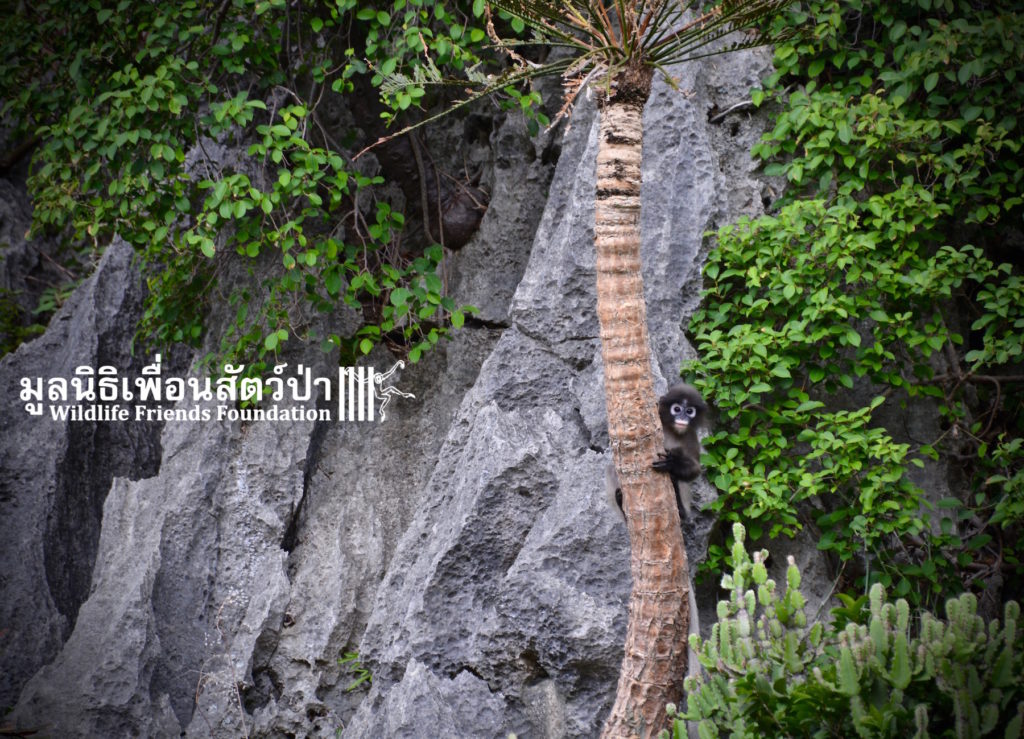Our team rescued a wild long-tailed macaque who had been struck by a car. He has severe injuries but our vets are doing everything possible
Dusky Langur Rescued and Released
A few days ago we received a call from the Kasetsart University Veterinary Hospital in Hua Hin about a wild dusky langur (Trachypithecus obscurus) that had been brought to them by a human rescue NGO in Pranburi after being found ‘lost’ in a hotel in central Pranburi, far from its forest home. As this facility does not specialize in the rehabilitation of wildlife we stepped into help. The WFFT Rescue Team collected the langur and brought it to the WFFT Wildlife Rescue Centre for a health check. After further questioning of the group that saved her, it was assumed that she was taken recently taken from the wild and had maybe escaped her captures. This is due to her behavior and the location she was found, as no wild populations of langurs were in the immediate area.
The IUCN Red List of Threatened Species lists the dusky langur as Near Threatened (NT). Hunting for food and the pet trade are major threats, as is habitat loss and degradation, due to expansion of agricultural practices and urbanization throughout its range. Considering the extensive habitat loss that has taken place within the range of the species, there is reason to believe that this species is in decline.
This species plays a major role in the ecology of the forest, providing ecosystem services in their forest habitats. They act as seed dispersers of the plants and fruits they eat, enhancing forest regeneration and connectivity. They also have an impact on the food chain as they serve as prey for various other species of animals such as leopards.
We would usually house an animal like this for a few weeks to assess the situation properly, contact authorities and plan the best future for such an individual. After spending two days at WFFT it was decided to take this langur back to the wild, as she was highly stressed and was not eating due to being in captivity, this was putting her life at risk. This species is highly susceptible to stress in captivity and providing a suitable diet is often difficult. We returned her to a protected area where other langurs are found, she was successfully introduced to a group. She is a young female so the integration to another group of wild langurs should not be a big problem. She is now back where she belongs.

